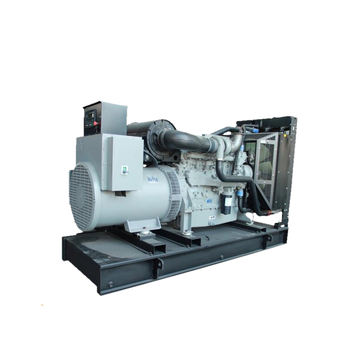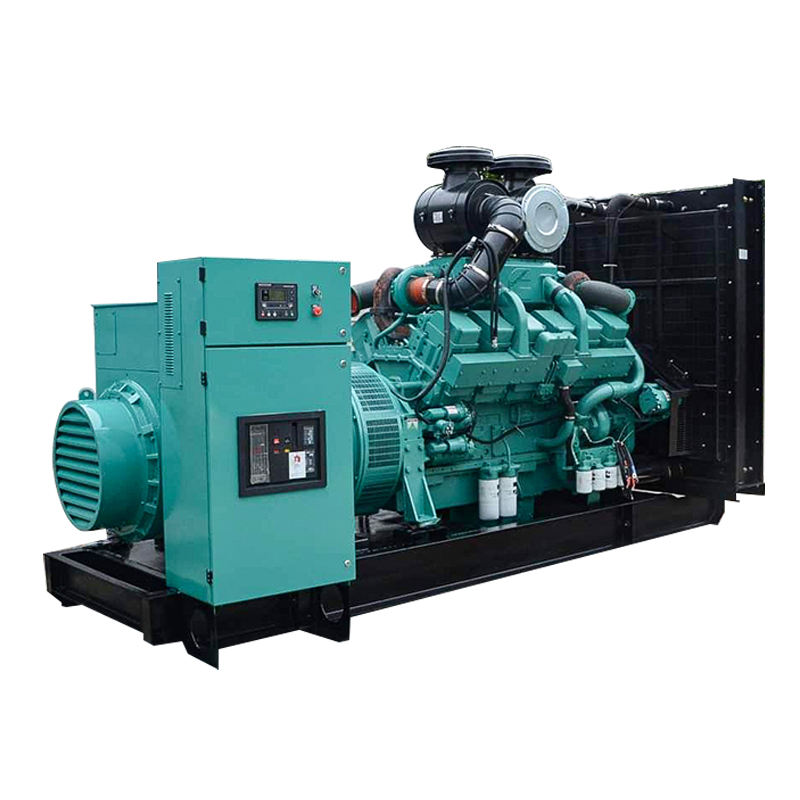Have you ever stopped to consider the complex machinery that keeps our lights on, our factories running, and our world connected? Behind the reliable flow of electricity lies a sophisticated global industry: power generation equipment manufacturing. This sector is far more than just assembling parts; it involves cutting-edge engineering, materials science, rigorous testing, and a deep understanding of diverse energy sources, from fossil fuels to renewable power. The demands placed on this equipment are immense – it must operate reliably under extreme conditions, meet stringent efficiency and environmental standards, and integrate seamlessly into national and international grids. Frankly speaking, the quality and innovation coming out of these manufacturing facilities directly impact everything from industrial productivity to the comfort of our homes. It's a field constantly evolving, pushed forward by the twin forces of increasing global energy demand and the urgent need for sustainable solutions. Understanding this manufacturing landscape provides crucial insight into the backbone of modern energy infrastructure.
The Backbone of Global Energy Infrastructure
The role of power generation equipment manufacturing in building and maintaining global energy infrastructure simply cannot be overstated. Every power plant, whether it's a massive thermal station, a sprawling solar farm, or a remote diesel generator site, relies on precisely engineered and expertly manufactured equipment. This isn't off-the-shelf technology; each component, from the largest turbine down to the smallest control system sensor, is designed and produced to meet specific operational requirements and environmental regulations. The manufacturing process demands incredible precision, often involving advanced techniques like precision machining, complex welding, and sophisticated quality control measures. Many experts agree that the reliability of the entire grid hinges on the integrity of this manufactured equipment. Think about the sheer scale involved – powering cities, industries, and critical services requires equipment that can perform consistently for decades with minimal downtime. This necessitates a manufacturing process that prioritizes durability, efficiency, and safety above all else. It's an industry that builds the literal engines powering our civilization.
Core Components in Manufacturing Power Systems
Delving deeper into the process reveals the array of core components essential to power generation equipment manufacturing. At the heart of many systems are prime movers like internal combustion engines (especially for diesel and gas generators), gas turbines, steam turbines, or even hydro turbines. Manufacturing these requires expertise in thermodynamics, metallurgy, and mechanical engineering. Coupled with these are the generators themselves – the electrical machines that convert mechanical energy into electrical energy. Producing high-quality alternators and synchronous generators involves intricate winding techniques, insulation technology, and magnetic design. Beyond the prime mover and generator, critical balance-of-plant equipment is manufactured, including complex switchgear for power distribution and protection, transformers to adjust voltage levels, and sophisticated control systems (often incorporating advanced automation and digital technologies) to monitor and manage operation. Each of these components demands specialized manufacturing processes and rigorous testing protocols to ensure they function correctly and reliably together as a complete power generation system. It's a symphony of manufactured parts working in concert.
Technological Advancements Driving Industry Evolution
The landscape of power generation equipment manufacturing is being dramatically reshaped by continuous technological advancement. Manufacturers are constantly pushing the boundaries of efficiency, striving to extract more energy from less fuel or resource input. This involves innovations in turbine blade design, combustion technology, and generator efficiency. Furthermore, the imperative to reduce environmental impact is driving significant changes. This includes manufacturing equipment designed for lower emissions (e.g., advanced catalytic converters for engines, carbon capture readiness for thermal plants) and, crucially, manufacturing specialized equipment for renewable energy sources like solar panel mounting systems, wind turbine components (nacelles, blades, towers), and battery energy storage systems. Digitalization is another major trend; modern equipment often includes embedded sensors and connectivity for remote monitoring, predictive maintenance, and integration into smart grids, requiring manufacturers to incorporate advanced electronics and software into their processes. These advancements don't just improve performance; they enable the cleaner, more flexible energy systems required for the future.
Precision Engineering in Equipment Production
Achieving the high standards required in power generation equipment manufacturing relies heavily on precision engineering. This isn't an industry where 'close enough' is acceptable. Components must fit together perfectly, materials must withstand extreme temperatures and pressures, and electrical systems must operate within tight tolerances. This necessitates the use of advanced manufacturing techniques such as CNC machining for complex part fabrication, laser cutting, robotic welding for consistency, and sophisticated casting processes for components like turbine blades. Furthermore, non-destructive testing (NDT) methods like ultrasonic testing, X-ray inspection, and dye penetrant testing are critical at various stages of production to detect any flaws before equipment leaves the factory. The selection and processing of materials are also paramount, often involving specialized alloys engineered for strength, heat resistance, and durability. Frankly speaking, the level of engineering and manufacturing expertise required is among the highest in any industry, reflecting the critical, demanding nature of powering the world reliably and safely. This meticulous approach ensures equipment longevity and performance.
Global Trends and Market Dynamics
Understanding power generation equipment manufacturing requires looking at the global market trends and dynamics influencing demand and innovation. Currently, there's a significant shift driven by the global energy transition. While traditional thermal power equipment still holds a substantial market share, particularly in regions with growing energy needs and reliance on existing infrastructure, the fastest growth is undoubtedly in manufacturing equipment for renewable energy projects and associated grid infrastructure. This includes everything from utility-scale wind and solar components to smaller, distributed generation systems and energy storage solutions. Geographically, demand varies significantly; emerging economies often require large-scale base-load power equipment, while developed nations focus on grid modernization, efficiency upgrades, and integrating intermittent renewable sources. Navigating international trade regulations, geopolitical factors, and diverse technical standards across different countries adds layers of complexity to the global operations of industrial power equipment suppliers. Manufacturers must remain agile and adaptable to these shifting market forces.
Navigating Supply Chains and Logistics in Manufacturing
A often-underestimated aspect of power generation equipment manufacturing is the complexity of managing global supply chains and logistics. Producing large, intricate machinery requires sourcing specialized materials, components, and sub-assemblies from a global network of suppliers. Ensuring the quality, timely delivery, and cost-effectiveness of these inputs is a monumental task. Furthermore, the finished products are often massive and heavy – think of a multi-ton generator or a towering wind turbine section. Shipping this equipment, often to remote project sites across continents, demands specialized heavy-lift logistics, intricate planning for transportation routes, and coordination with multiple parties. Any delay or disruption in the supply chain or logistics network can have significant financial and project timeline impacts. Manufacturers must build resilient, transparent supply chains and partner with experienced logistics providers to navigate these challenges effectively. This logistical mastery is just as crucial as the engineering prowess in successfully delivering power generation solutions.
Ensuring Quality, Reliability, and Safety Standards
In an industry where failure can have catastrophic consequences – from widespread power outages to safety hazards – ensuring the highest standards of quality, reliability, and safety is paramount in power generation equipment manufacturing. This involves adherence to numerous international and national standards and certifications (e.g., ISO 9001, specific electrical safety codes, environmental regulations). Quality control is embedded throughout the manufacturing process, from inspecting raw materials to testing finished products under simulated operational conditions. Reliability engineering is crucial in the design phase, predicting component lifespan and failure modes to build in redundancy and robustness. Safety features are non-negotiable, designed to protect both personnel and equipment during installation, operation, and maintenance. Many manufacturers have dedicated testing facilities capable of putting equipment through rigorous paces before it's shipped. To be honest, a manufacturer's reputation in this field is built on a proven track record of delivering equipment that performs safely and reliably for decades, often in harsh environments. This unwavering focus on quality is the bedrock of the industry.
The Future Landscape for Power Generation Equipment Manufacturing
Looking ahead, the future of power generation equipment manufacturing promises continued innovation and transformation. The ongoing global energy transition will accelerate demand for equipment supporting renewable energy sources and smart grid technologies. This includes manufacturing advanced energy storage solutions, sophisticated grid-scale inverters, and equipment for distributed generation projects like rooftop solar integration and microgrids. Emerging technologies like hydrogen fuel cells and small modular reactors (SMRs) for nuclear power will also require new manufacturing capabilities and specialized equipment production. Manufacturers are increasingly adopting advanced digital technologies like the Internet of Things (IoT), Artificial Intelligence (AI), and digital twins in their own operations to optimize production, improve quality control, and offer enhanced service capabilities. The manufacturing processes themselves will become more automated and data-driven. It's an exciting time, requiring manufacturers to be at the forefront of both energy technology and advanced manufacturing practices to meet the world's evolving energy needs.
Solving Power Challenges with Reliable Manufacturing
Reliable power generation solutions are essential for businesses and communities everywhere. Whether it's providing standby power for critical facilities, prime power in off-grid locations, or supplementary power for industrial processes, the quality of the equipment is non-negotiable. This is where specialized power generation equipment manufacturing expertise becomes invaluable. Manufacturers with decades of experience understand the nuances of designing and producing equipment that performs reliably under pressure. They know how to select the right engines, generators, and control systems for specific applications, ensuring optimal efficiency and longevity. Frankly speaking, partnering with a manufacturer known for quality means investing in peace of mind – knowing your power source will be there when you need it, built to withstand the rigors of continuous operation. From precision-engineered diesel generators to robust control panels, the manufacturing quality directly translates into operational stability and cost-effectiveness over the equipment's lifespan. Choosing a reliable partner in power generation equipment manufacturing is a critical decision for ensuring energy security and operational continuity.
In conclusion, the field of power generation equipment manufacturing is a dynamic and critical industry powering the modern world. It demands immense technical expertise, a commitment to quality, and the ability to navigate complex global markets and supply chains. As the world transitions to cleaner and more decentralized energy systems, the role of innovative and reliable manufacturing will only grow. For anyone involved in energy infrastructure development, industrial operations, or simply requiring dependable power, understanding the capabilities and standards within this manufacturing sector is key. Choosing the right equipment from a trusted manufacturer ensures not just power, but reliable, efficient, and sustainable power for the future. Have you assessed the manufacturing quality of your critical power systems lately? Ensuring it meets the highest standards is a vital step towards energy resilience. To explore high-quality power generation solutions tailored to your specific needs, taking the next step is easy.
For more detailed information, please visit our official website: power generation equipment manufacturing





